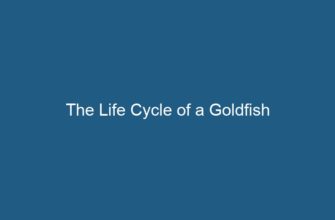North America is home to a diverse range of wildlife, but when it comes to marsupials, there is only one representative – the Virginia opossum. This fascinating creature belongs to the Didelphidae family and is commonly known as the opossum. In this article, we will explore the unique characteristics, habitat, behavior, diet, and other interesting facts about the Virginia opossum.
- 1. Taxonomy and Classification
- 2. Physical Characteristics
- 2.1. Reproduction and Lifespan
- 3. Habitat and Distribution
- 4. Behavior and Adaptations
- 4.1. Playing Dead (Playing Possum)
- 4.2. Climbing and Prehensile Tail
- 4.3. Opportunistic Feeding
- 5. Interactions with Humans
- 6. Interesting Facts
- 7. FAQs
- Q1: Are opossums dangerous to humans?
- Q2: Do opossums carry diseases?
- Q3: Can opossums transmit rabies?
- Q4: What should I do if I encounter an injured or orphaned opossum?
- Q5: Can opossums be kept as pets?
- Q6: How can I deter opossums from my property?
- Q7: Are opossums beneficial for the environment?
- Conclusion
1. Taxonomy and Classification
The Virginia opossum, scientifically known as Didelphis virginiana, belongs to the order Didelphimorphia and the family Didelphidae. It is the only marsupial species found in North America.
2. Physical Characteristics
The Virginia opossum has a distinct appearance with a long, hairless tail, a pointed snout, and small, rounded ears. It has a grayish-black fur coat with a white face and a pink nose. Adult opossums typically measure around 13 to 37 inches (33 to 94 cm) in length and weigh between 4 to 14 pounds (1.8 to 6.3 kg).
2.1. Reproduction and Lifespan
Female opossums have a unique reproductive system. They have a bifurcated reproductive tract, with two uteri and two vaginas. The female gives birth to relatively undeveloped young, which then crawl into a pouch on the mother’s belly to continue their development. A female opossum can give birth to up to 20 offspring, but usually, only around 7 to 8 survive due to limited teats in the pouch.
The average lifespan of a Virginia opossum is around 2 to 4 years in the wild, but they can live up to 6 years in captivity.
3. Habitat and Distribution
The Virginia opossum is primarily found in North, Central, and South America. It has a wide distribution range that extends from southern Ontario, Canada, to Costa Rica. In North America, it is mainly found in the United States and Mexico.
Opossums are highly adaptable and can thrive in a variety of habitats. They are commonly found in forests, woodlands, swamps, and urban areas. They are excellent climbers and can also take shelter in tree hollows, burrows, or abandoned dens.
4. Behavior and Adaptations
Opossums are predominantly nocturnal animals, which means they are most active during the night. They have several unique adaptations that help them survive in their environment:
4.1. Playing Dead (Playing Possum)
When threatened or cornered, opossums have the ability to play dead. They enter a state of involuntary paralysis, become limp, and emit a foul odor that mimics the smell of a decaying corpse. This defense mechanism often deters predators, as they assume the opossum is no longer a threat.
4.2. Climbing and Prehensile Tail
Opossums are skilled climbers and have a prehensile tail that helps them maneuver through trees and branches. They can use their tail to grasp and hang onto objects, providing them with stability and balance.
4.3. Opportunistic Feeding
Opossums are omnivorous and have a varied diet. They are opportunistic feeders and will consume whatever food is available. Their diet includes fruits, vegetables, nuts, insects, small vertebrates, eggs, carrion, and even garbage.
5. Interactions with Humans
Opossums have a mixed relationship with humans. On one hand, they are considered beneficial as they help control populations of pests like rodents, ticks, and insects. On the other hand, they can be seen as a nuisance when they rummage through trash or cause damage to property.
It is important to note that opossums are generally not aggressive towards humans and are unlikely to transmit diseases such as rabies. However, they may hiss, growl, or show their teeth if they feel threatened.
6. Interesting Facts
- Virginia opossums are excellent swimmers and can use their long tail to propel themselves through water.
- They have a low body temperature, which makes them less susceptible to some diseases.
- Despite their relatively short lifespan, opossums have a high reproductive potential, with females capable of producing multiple litters per year.
- Opossums have a specialized immune system that allows them to resist venomous snakebites.
- They have a remarkable ability to regenerate lost tissues, such as skin and fur.
7. FAQs
Q1: Are opossums dangerous to humans?
A1: Opossums are generally not dangerous to humans. They are non-aggressive and avoid confrontation. However, if they feel threatened, they may show defensive behaviors like hissing or growling. It is best to give them space and avoid provoking them.
Q2: Do opossums carry diseases?
A2: While opossums can carry diseases such as leptospirosis and tuberculosis, the risk of transmission to humans is relatively low. It is always recommended to practice good hygiene and avoid direct contact with wild animals.
Q3: Can opossums transmit rabies?
A3: Opossums have a very low body temperature, which makes them resistant to the rabies virus. It is extremely rare for opossums to transmit rabies to humans.
Q4: What should I do if I encounter an injured or orphaned opossum?
A4: If you come across an injured or orphaned opossum, it is best to contact local wildlife rehabilitation centers or animal control agencies. They have the expertise to handle and care for these animals properly.
Q5: Can opossums be kept as pets?
A5: In some places, it may be legal to keep opossums as pets with the appropriate permits. However, they have specific dietary and environmental needs that can be challenging to meet. It is always best to consult local laws and regulations before considering an opossum as a pet.
Q6: How can I deter opossums from my property?
A6: To deter opossums from your property, you can take the following measures:
- Secure garbage cans with tight-fitting lids.
- Remove potential food sources, such as fallen fruits or pet food left outside.
- Seal off any entry points to your house or outbuildings, such as gaps or holes.
- Install motion-activated lighting or sprinklers to discourage their presence.
Q7: Are opossums beneficial for the environment?
A7: Yes, opossums play a beneficial role in the environment. They help control populations of pests like rodents, ticks, and insects. Their scavenging behavior also aids in the decomposition of carrion, contributing to nutrient cycling in ecosystems.
Conclusion
The Virginia opossum is a unique and interesting marsupial that holds the title of being the only one found in North America. Its ability to adapt to different habitats, its distinctive behaviors like playing dead, and its varied diet make it a fascinating creature to study. While opossums may not be the most well-known animals, they play a significant role in maintaining the balance of their ecosystems.










